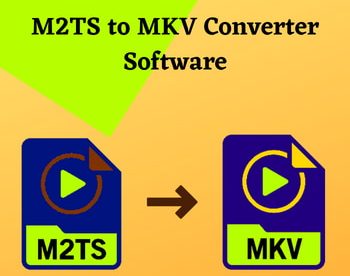6 Best Free Concept Mapping Software For Windows
Here is a list of best free concept mapping software for Windows. These software are used to organize knowledge as well as to show the relationship between concepts by creating a concept map. Concept maps basically contain two important entities i.e. enclosed boxes to specify concepts and links to link concepts as well as to display a relationship between concepts. Concept maps mainly designed in a downward-branching hierarchical structure and each concept can have any number of sub-concepts. In most concept maker software, you can also express your ideas by using pictures, icons, etc. in a concept map.
These freeware also provide some advanced features like presentation, annotation/notes, recorder (to record map making process), etc. Plus, these software also let you save concept maps in various formats like PDF, TXT, DOC, HTML, etc.
My Favorite Concept Mapping Software For Windows:
CmapTools is my favorite concept mapping software because it comes with a distraction-free interface along with all important tools. Its advanced tools like presentation, annotation, etc., also allow you to make concept maps more understandable. Plus, its ability to save maps in multiple formats is its another advantage.
You can also check out lists of best free Mind Mapping, Key Mapping, and Fishbone Diagram Maker software for Windows.
CmapTools

CmapTools is a free concept mapping software for Windows. This software is mainly used to create concept maps. As you know, through concept maps, you can express your plans/ideas in an organized manner so that everyone can understand them easily.
In order to express ideas, this software provides all essential tools through which you can create enclosed concept boxes/circles, concept linking lines, etc. You can simply write your main concept in the middle or top box and show connected ideas in subsequent boxes. In this software, you can also specify each concept connecting lines to represent the type of relationship between two ideas.
Here are the sorted steps to create concept maps in CmapTools:
In order to design a concept map, first, open a new cmap file from the file menu. In the newly created file, you can start making the concept map by double-clicking on the canvas. Each double click will result in an enclosed box in which you can write main or related ideas. Now to connect the boxes, you can stretch out a line from one box to another just by clicking and dragging the line from one box to another box. The design of the concept map can be of various types like tree design (where each concept can have maximum two sub-concepts), graphs (this design can have any number of sub-ideas), etc. Here, you also get a floating style window to customize the color of boxes, types of connecting lines, text font, object, etc. The created concept maps can be exported in PDF, SVG, CXL, HTML, etc. formats.
This freeware also provides few additional tools like presentation builder (to display the concept map as a slide), annotation (to elaborate each idea with annotations), cmap recorder (to record the whole concept map making process), etc.
Mindomo

Mindomo is mainly a mind mapping software, but you can also use it as a concept mapping software. For concept mapping, it provides all important tools like enclosed boxes for main or side concepts, concept connecting lines to show the relationship between concepts, and options to add media, icons, comments, etc. Plus, you can also create a slideshow to show each step of concept map making. Slideshows can be directly exported as PPT and ZIP files.
In this software, you get one predefined concept map structure (blank concept map) and five predefined mind map structures (task mind map, blank mind map, etc.). The main difference between a concept map and mind map structure is that in the concept map, you can define the exact role of connecting lines, unlike mind map structure.
Using the blank concept map structure, you can start making a concept map. Initially, the structure contains only one enclosed box to define the main topic. You can add more topics, sub-topics, floating topics, etc. by clicking on the top right edge of the first enclosed box. To join the boxes, you need to click and drag a line from the center bottom of a box towards another box. Here, you also get a side toolbar through which you can add notes, hyperlinks, multimedia, icons, comments, etc., to a concept map. The created concept map can be exported as XLSX, DOCX, PDF, TXT, PNG, etc. files. Options to save concept map in PC as well as in cloud as mindomap file format are also available.
Note: In this free version, you will get limited functionalities. To use all of its features without limitations, you need to buy its paid version.
Visual Understanding Environment

Visual Understanding Environment is a free and opensource concept mapping software for Windows. Through this software, you can make casual loop maps, system maps, and of course, a concept map. Here, you also get an additional pathway menu to create slides to show step by step process of concept map making. You can play the slides like a presentation using playback slides option. Its multitab and split window interfaces are also quite useful features to have.
This software does not have any kind of predefined structure to make a concept map, instead, it provides two different linking tools which affect the making of a concept map named link tool and rapid prototyping. In link tool, you can make concept map conventionally i.e. by creating one enclosed box at a time and then joining them through links. However, in rapid prototyping, you can quickly create a concept map because, in a single step, you can create an enclosed box as well as join it with another box. To join boxes in a single step, you just need to click and hold on the canvas and drag the mouse in any direction and release the mouse. This process will create a two joined enclosed boxes with a link.
To make a content and media-rich concept map, you can insert photos, texts of various fonts, change box color, text color, etc. Plus, further customization of links (arrow, straight, and curved), nodes (resize nodes/boxes), alignment, etc. can also be performed. After completion of a concept map, you can save it in various formats such as PDF, JPG, PNG, VUE, SVG, etc.
Overall, it is a simple as well as feature-rich software to make concept maps easily.
CompendiumLD
CompendiumLD is a free learning design software for Windows. It is used by lecturers, professors, etc. to design learning activities using a flexible visual interface. This software basically uses concept mapping technique to create a learning map. It also has some specific feature to create a learning design like learning nodes (learning outcome, answer node, note node, etc.) which are specifically created for learning maps, tags (problem, requirement, resource, etc.), etc. Plus, each node also has its own icon so that students can easily understand the learning design or map.
Creating a concept map, or a learning map in this case, is pretty easy. First, you need to drag and drop nodes from the side toolbar to canvas. Edit the concept node’s title, icon, etc. by accessing the right-click menu. After that, you can start linking nodes by pressing the right click and dragging mouse between two nodes. If any of the nodes has more than one subtasks, then you can add a tag on that node to represent various subtasks at once. Besides this, all standard features like text font changer, zoom in/out tools, arrange, align, etc. are also available.
Lastly, you can save and export the concept map as learning design, web maps, JPEG, and SVG files.
XMind 8
XMind 8 is another mind mapping software that can also be used as a concept mapping software. In it, you get all the necessary mind mapping as well as concept mapping tools. For concept mapping, it provides enclosed boxes (for key concepts), linking lines (to define the relationship between concepts), etc. To make the task easier, various predefined map templates and structures are also available, which you can edit to avoid the designing of concept mapping structure manually. Its multitab interface is also quite helpful to work on multiple concept mapping diagrams.
To make a new concept map from scratch, first, open a new canvas from the file menu. Now, right click on the canvas and either add floating topic or floating central topic to create an enclosed box. To join the topics, select relationship tool from the top toolbar and start joining the boxes. You can also highlight the relationship between two boxes by writing on the relationship lines. Besides this, various other types of connecting lines like curved, spearhead, dashed, herringbone, etc. are also available.
Once done, you can either save concept map as Xmind Workbook or export it as TXT, HTML, SVG, etc. file formats.
Note: In this free version, various important features like presentation, insert media option, and saving map as PDF, DOC, etc. are disabled. You need to buy its paid version to enjoy all of its features.
BrainSharper
BrainSharper is a free and easy to use concept mapping software for Windows. It is one of the simplest concept mapping software. On its interface, you can view only four features namely undo, redo, document naming, and share. Besides this, no other feature is available on its interface. Still, essential features to design a concept map are available in it like enclosed box for concepts and connecting lines with labeling feature.
In order to design a concept map, you need to create nodes and linking lines. Double click on the canvas to create an enclosed box and write a concept in that box. Now, if you click on the box again and press and hold the plus sign, then you will be able to select colors for the linking lines. To create a link between boxes, press and hold the plus sign of one box and drag the mouse towards another box or node. At last, you can add labels to the linking lines between boxes by double-clicking on the link. By following the previous steps, you can create a complete concept map. After completion, you can only save the concept map in a PNG image format.
Overall, it is a simple concept mapping software, but it also lacks a lot of features which are available in other similar software.
Naveen Kushwaha
Passionate about tech and science, always look for new tech solutions that can help me and others.
About Us
We are the team behind some of the most popular tech blogs, like: I LoveFree Software and Windows 8 Freeware.
More About UsArchives
- May 2024
- April 2024
- March 2024
- February 2024
- January 2024
- December 2023
- November 2023
- October 2023
- September 2023
- August 2023
- July 2023
- June 2023
- May 2023
- April 2023
- March 2023
- February 2023
- January 2023
- December 2022
- November 2022
- October 2022
- September 2022
- August 2022
- July 2022
- June 2022
- May 2022
- April 2022
- March 2022
- February 2022
- January 2022
- December 2021
- November 2021
- October 2021
- September 2021
- August 2021
- July 2021
- June 2021
- May 2021
- April 2021
- March 2021
- February 2021
- January 2021
- December 2020
- November 2020
- October 2020
- September 2020
- August 2020
- July 2020
- June 2020
- May 2020
- April 2020
- March 2020
- February 2020
- January 2020
- December 2019
- November 2019
- October 2019
- September 2019
- August 2019
- July 2019
- June 2019
- May 2019
- April 2019
- March 2019
- February 2019
- January 2019
- December 2018
- November 2018
- October 2018
- September 2018
- August 2018
- July 2018
- June 2018
- May 2018
- April 2018
- March 2018
- February 2018
- January 2018
- December 2017
- November 2017
- October 2017
- September 2017
- August 2017
- July 2017
- June 2017
- May 2017
- April 2017
- March 2017
- February 2017
- January 2017
- December 2016
- November 2016
- October 2016
- September 2016
- August 2016
- July 2016
- June 2016
- May 2016
- April 2016
- March 2016
- February 2016
- January 2016
- December 2015
- November 2015
- October 2015
- September 2015
- August 2015
- July 2015
- June 2015
- May 2015
- April 2015
- March 2015
- February 2015
- January 2015
- December 2014
- November 2014
- October 2014
- September 2014
- August 2014
- July 2014
- June 2014
- May 2014
- April 2014
- March 2014
